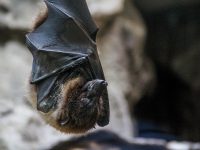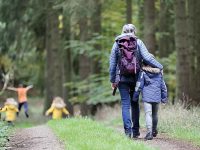Spring from our balconies
Three botanists and an ornithologist bring wildlife from the streets to our homes.
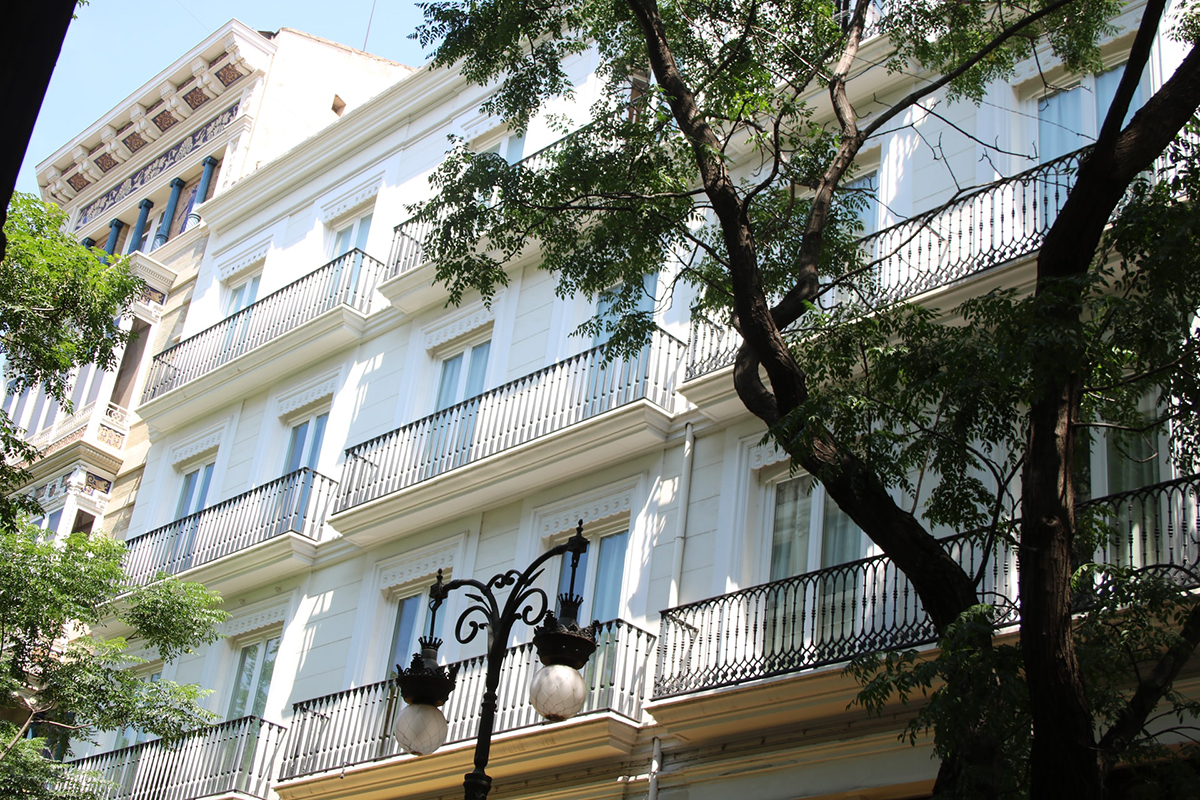
Just as every other year, spring bursts and fills the streets with flowers, leaves, and fruits creating lively and colourful carpets to announce the arrival of fine weather. The city’s trees and animals may go unnoticed on a daily basis, but during the quarantine caused by the COVID-19 pandemic, the song of swallows at sunset or the soft dance of the leaves have become shows bringing spring to our balconies.
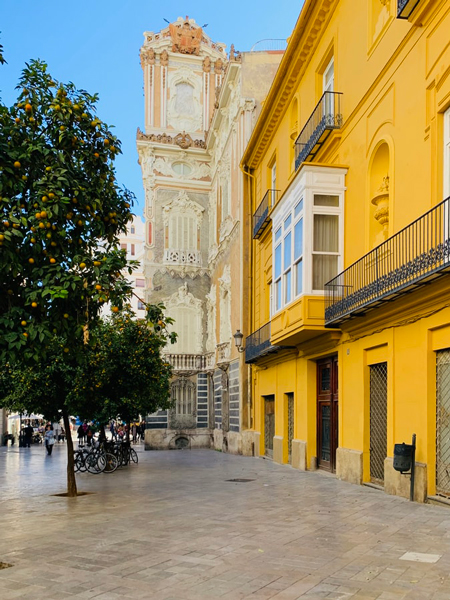
Bitter orange tree. / @daveheere, en UNSPLASH
The history of urban plants
Segundo Ríos, director of the Torretes Botanical Garden (University of Alacant), says that ancient Romans already created plant corridors along the walkways, toying with the shape of the species they planted: elongated cypresses, pine trees with umbrella-shaped tops, holm oaks, palms, or rosemary. The Latin name for the latter, which comes from ros (“dew”) and marinus (“sea”), is reminiscent of the Mediterranean. Likewise, the Muslims built “platforms” on the promenades, where fruit trees were planted. The walkway was thus half a meter high, which allowed pedestrians to pick the fruit without muddying their slippers.
The city’s ornamental flora is made up mostly of exotic species, but there are also native ones, such as the holm oak (Quercus ilex rotundifolia), which can still be found in the streets of Valencia’s historic centre and in the avenues of Tarongers and Aragon. Jaime Güemes, director of the Botanical Garden of the University of Valencia, explains that the plant species found on the streets depend on the trends of each moment, as well as the plan of the corresponding town council.
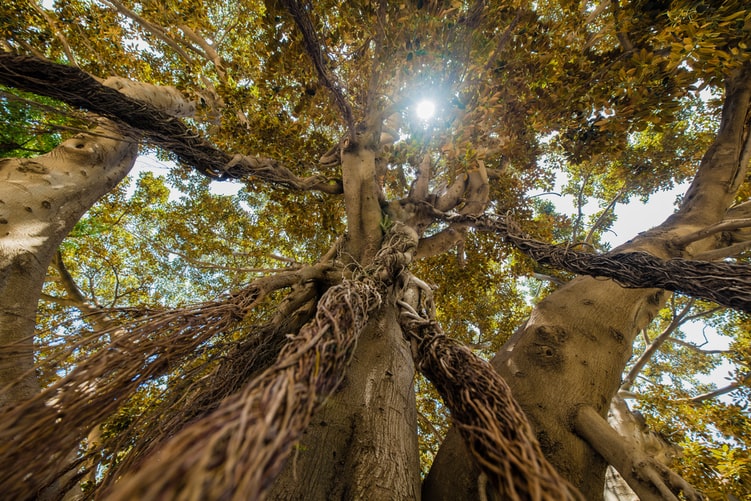
Detail photo of a ficus. / @richardhewat, en UNSPLASH
Distinctive trees in the city
In Valencia, some of the most recognisable species mentioned by Güemes are the bitter orange tree (Citrus aurantium), found all over the city; the ficus tree in Calle Colón and the Joaquín Sorolla area; the cinnamon tree (Melia azedarach), a tree from Eastern countries such as China and India that shows its pink flowers during the summer, which can be seen in Guillén de Castro and in the streets surrounding Avenida del Puerto; the Judas trees of Avenida Menéndez Pelayo (Cercis siliquastrum, native to the Mediterranean regions); the ginkgo (Ginkgo biloba) of Calle Pizarro, and the jacaranda (Jacaranda mimosifolia), a tree native to Latin America that floods areas such as Plaza del Carmen and La Glorieta with lilac flowers.
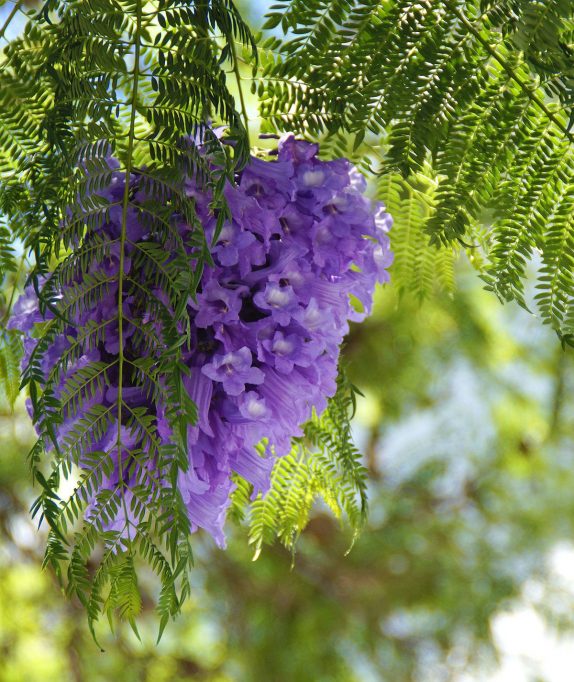
Flower of Jacaranda mimosifolia. / Botanical Garden of the University of Valencia
Güemes also points to some of the city’s monumental trees, such as the Ficus macrophylla at Parterre and Glorieta – a tree from the fig tree family that came to Valencia in the nineteenth century due to French influence – or the Magnolia grandiflora at the Palace of Justice, originally from North America and characterised by its enormous white flowers, which act as a landing strip for those rather clumsy beetles responsible for pollination. In addition, its perfume is considered by many to be an «exquisite» aroma. Even so, the botanist explains that there are a series of trees that have been used a lot in the streets of the city, such as plane trees, hackberry trees, mulberry trees, Lagunaria trees, Tipuana trees, and palm trees, among others.
Plane tree
Rios says that the oldest plane tree, Platanus orientalis, used during Roman and Greek times for its shade, was joined by a species brought from North America, the Platanus occidentalis. From these two came the Platanus x hispanica, which now lives in most of the gardens on the peninsula and in Europe. In Valencia it can be found on large avenues such as Avenida Blasco Ibáñez or Paseo de la Alameda.
Hackberry tree
The hackberry (Celtis australis) is one of the trees that has been recovered in recent years. It is a tree rooted in the traditional culture of the Valencian Country, so much so that it gives its name to the patron of Castelló de la Plana, La Mare de Déu del Lledó (“the Virgin of the hackberry”).
Güemes says that the plans for ornamental flora usually change depending on the team working in the city council. For example, during this term, the hackberry tree and the ash-leaved maple, or Acer negundo, the tree that has winged seeds that glide down to the ground, are replacing the orange trees planted during the years of the previous government.
Mulberry tree
Another one of the city’s traditional trees is the mulberry tree (Morus alba), whose leaves used to feed silkworms. In fact, silk was the city’s most powerful industry from the sixteenth to the eighteenth century. The mulberry monoculture preceded that of the orange tree, but its influence has remained in many of the streets of Valencia. The conflict caused by this tree is that their fruit falls to the ground and «dirties» the road, so it has been replaced by a hybrid and sterile variety, the fruitless Morus alba.
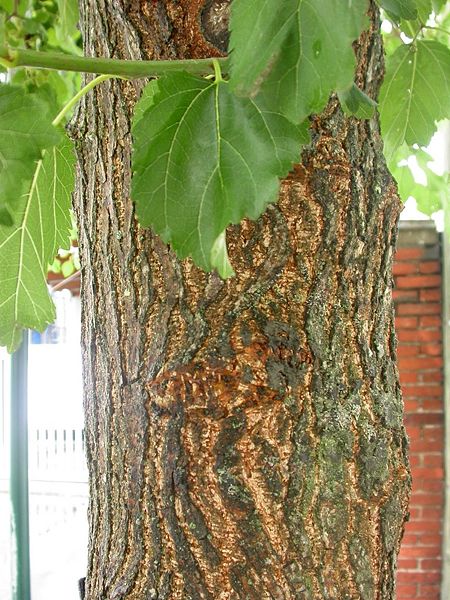
Leaves and bark of a mulberry tree. / Andre Abrahami, in Wikimedia Commons
One of the main things that Ríos highlights are the aggressive pruning techniques used in the city. As he explains, going beyond a certain point in pruning can be dangerous for the trees and give them a series of malformations and cancers that will make them look «monstrous». For the botanist, examples of «brutal» pruning can be the one done to mulberry trees when they still have leaves – because it takes away a lot of strength from the tree – or the one done to plane trees to prevent them from growing too big, unlike banana trees in the United Kingdom, which are allowed to grow freely.
Tal com explica Güemes, la jardineria ornamental és un equilibri entre la flora natural i l’adaptació al medi urbà. Així, hi ha plantes que tindran més facilitat a l’hora de «conviure» amb les persones a la ciutat i d’altres que menys, com ara Ligustrum vulgare o llampuga, un arbust amb fruits semblants als de l’olivera que quan cauen taquen el terra i els cotxes amb un tint rogenc, provocant molèsties entre el veïnat.
Lagunaria
Botanist and University of Valencia professor Emili Laguna explains that Lagunaria patersonia is a close relative of hibiscus and mallow. The fruit is a capsule with hard seeds, separated by short, urticant hairs that are very itchy if touched with bare hands or other parts of the body, a fact that justifies one of its popular names, the Itchy Bomb tree. The name of the genus was dedicated to the Segovian doctor, pharmacologist, and botanist Andrés Laguna. He worked for the court of Charles I, Philip II, and Pope Julius III. His best known work is the first transcription and adaptation into Spanish of the work of Dioscorides, one of the most important compilations of medicinal plants to date.
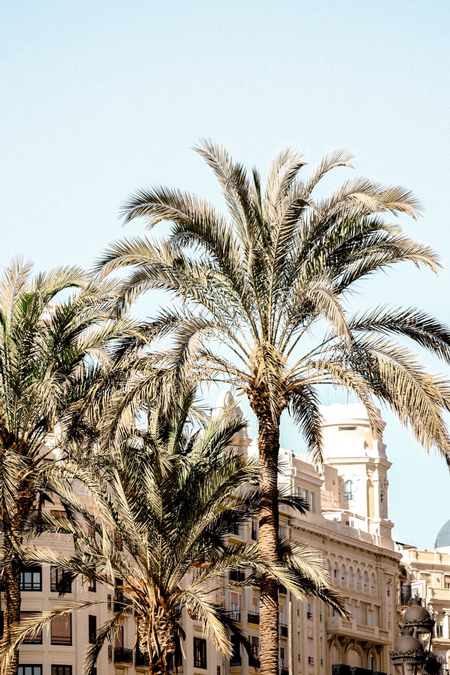
Date palm trees. / @monicaballesterb, at UNSPLASH
Tipuana
Tipuana tipu, also known as rosewood, is another common tree in the city. Its leaves resemble those of acacias but the flowers are yellow. Laguna explains that one of the particularities of Tipuana is that its fruit, instead of being a pod – like any other legume – is a winged legume or samara, similar to the Acer negundo’s but larger, which falls to the ground resembling the spinning of a helicopter’s propeller. Although it is deciduous, this tree does not lose its leaves in autumn but during the months of February or March, and soon starts making new leaves and flowers, which often form a golden carpet when they fall to the ground.
Palm trees
Palm trees are one of the most characteristic trees in the Valencian territory, found in many places in our geography, such as the palm grove in Elche, which has been declared a World Heritage Site. In the city of Valencia, the most common varieties are the date palm tree (Phoenix dactylifera), with a tall trunk covered in old leaves that resists extreme heat and dryness very well. New leaves can reach up to four metres in length and their fruit can be eaten. They are the protagonists in some of the city’s avenues, such as Antiguo Reino de Valencia.
Another common species is Washingtonia robusta, also known as Mexican fan palm, which can reach up to 35 meters in height, with a wide base and high resistance to drought. It can be seen on the Malvarrosa promenade. Finally, the Canary Island Date Palm (Phoenix canariensis), a species with darker leaves than the date palm and with a thicker trunk, can be found in areas such as La Glorieta.
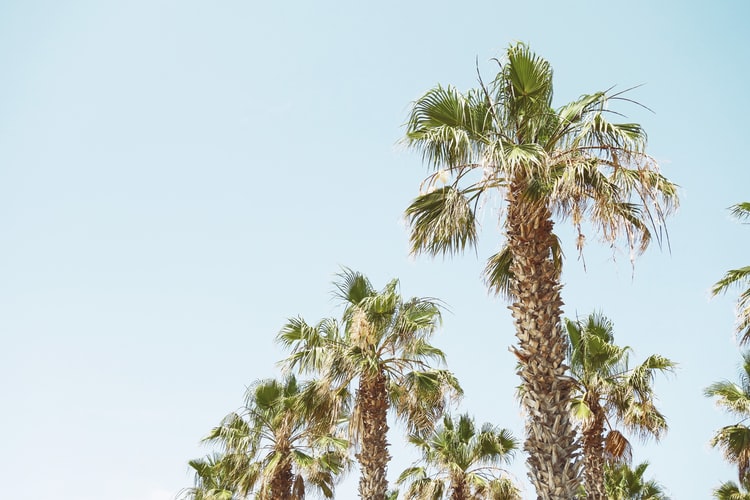
Mexican fan palms. / @travelnow_or_crylater, en UNSPLASH
The great survivors
Simón Fos is a botanist and author of Les plantes del nostre entorn. Flora silvestre de Paiporta (Edicions Bullent). He has studied the flora that emerges spontaneously in open fields, cracks in the pavement, manholes, or even rooftops. The professor calls these plants “the great survivors” because they are adapted to living in very harsh conditions, withstanding the weather and environmental conditions of the urban environment. Some of these are the common sowthistle (Sonchus), borage (Borago officinalis) or false yellowhead (Dittrichia viscosa), which also grow in garden areas near the city. They can go unnoticed, but some of them have culinary uses and have been used in traditional cuisine, as is the case with borage flowers.
Also noteworthy are the plants that grow in the tree pits, filling them with herbs or flowers that not everyone likes. As Güemes explains, these spaces have been kept «bare» in the city of Valencia with the use of herbicides during the government of Rita Barberá, but from 2015 they began to be allowed to grow.
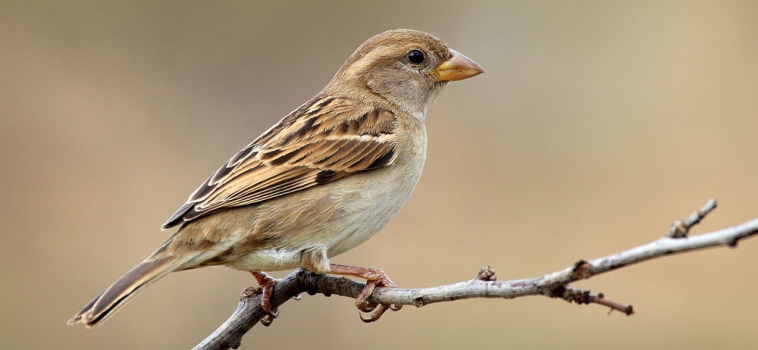
Female house sparrow. / Joaquin Matamales, SEO/BirdLife
The inhabitants of trees
If we look at the species of trees and bushes that grow in our streets we will find other inhabitants who are also part of the city and who normally live among the leaves. This is the case of the urban wildlife, composed mainly of birds, insects, cats, and small rodents. During this quarantine, bird nests have started to be seen in unusual areas, such as Avenida Blasco Ibáñez, which indicates a change in the behaviour of the city’s animals.
According to Pablo Vera, ornithologist and technician at SEO/BirdLife, the last few weeks have resulted in two things. The first, a change in the behaviour of urban species thanks to the reduction in the number of people and cars on the streets. That’s why birds are spending more time on the ground, making more nests and lowering their pitch. Secondly, confinement has led to increased human observation of birds. Vera explains that during the last few days we have been paying more attention to our surroundings and this can lead us to discover winged companions whom we previously did not notice as much.
During the breeding season we can find domestic pigeons, turtle doves, black starlings, sparrows, blackbirds, swifts, swallows, tits, serins, gulls, and parrots. The ornithologist explains that in spring, small native birds such as sparrows, tits, or serins need animal protein to produce a suitable eggshell so that their offspring can develop properly. And this protein comes from insects or invertebrates that birds find in parks and on the ground, such as beetles, caterpillars, or bugs.
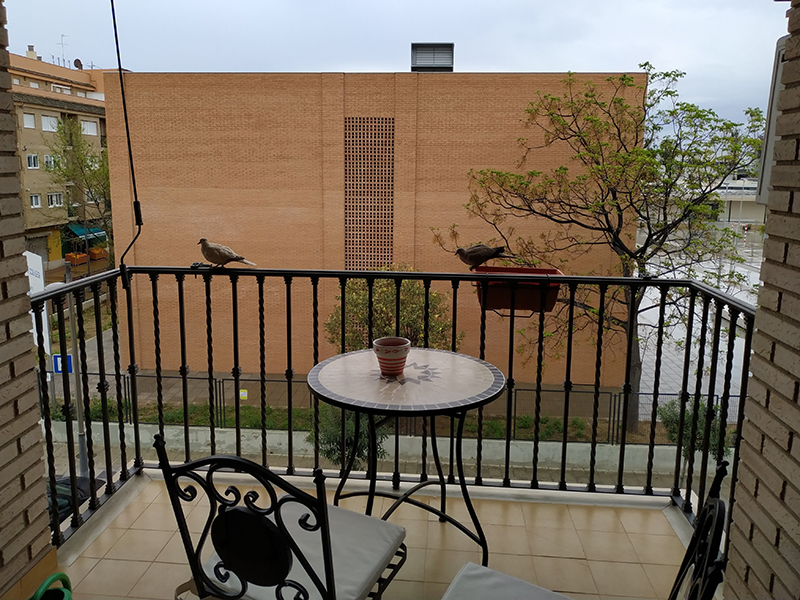
During the breeding season we can find domestic pigeons, turtle doves, black starlings, sparrows, blackbirds, swifts, swallows, tits, serins, gulls, and parrots. / Mètode
Who do the birds coexist with?
Birds coexist with other urban animals, such as cats and rodents – rats and mice – and other small animals such as bats. Vera warns us about locating cat colonies – which help with city pest control – near attractive bird environments, such as parks, as it can be a danger to the bird population. In turn, rats and mice seek out life in gardens and trees, for example in palm trees, where they make their nests. In any case, feeding city animals during quarantine is not forbidden and can help avoid imbalances in urban wildlife.
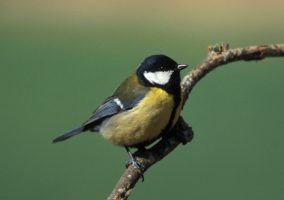
Specimen of great tit. / SEO/BirdLife
SEO/BirdLife has launched initiatives such as #quedateenelnido (“stay in your nest”), which invites people to watch the birds they find on the balcony during the confinement, or its citizen science program, a follow-up that is done with volunteers trained by the association to create a census of the bird population at certain locations in the city.
Finally, Vera mentions La Albufera de València, an important bird reserve near the city, and explains that now is a bad time for birds because of the dry environment. In addition, she assures that they have not yet had time to see the effects of the quarantine on the birds of the reserve, but she guesses that there will be changes, as for example the shocking arrival of flamingos to La Albufera.
To continue getting closer to the flora and fauna of our cities, from Mètode we invite you to discover which of the species that form the urban landscape can be seen from your balcony and share it in the nets with the hashtag #primaveradesdelbalco (“spring from our balconies”).


